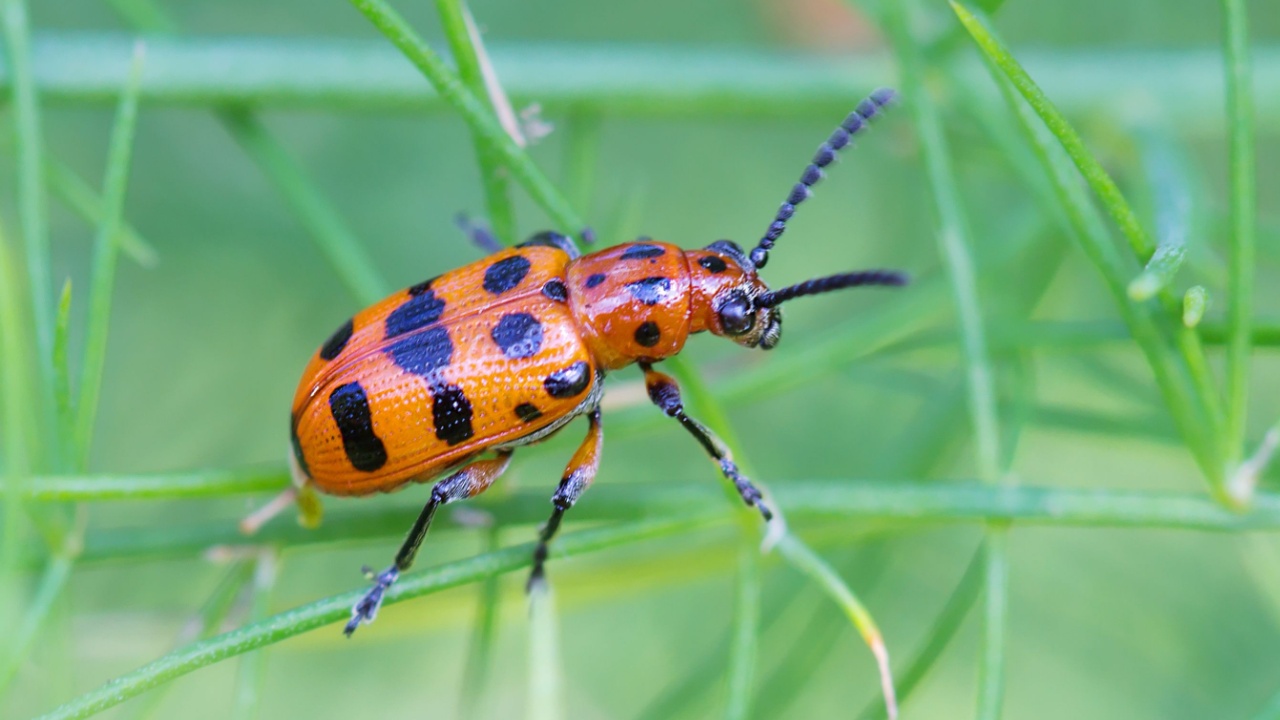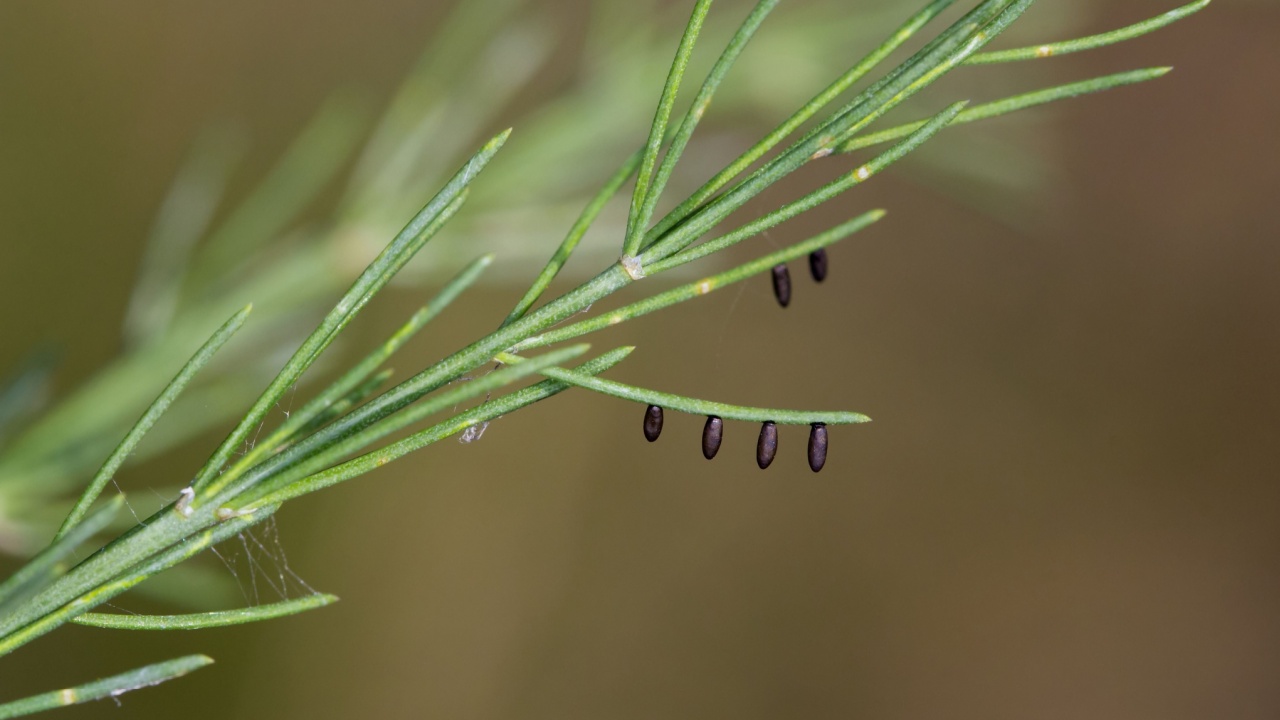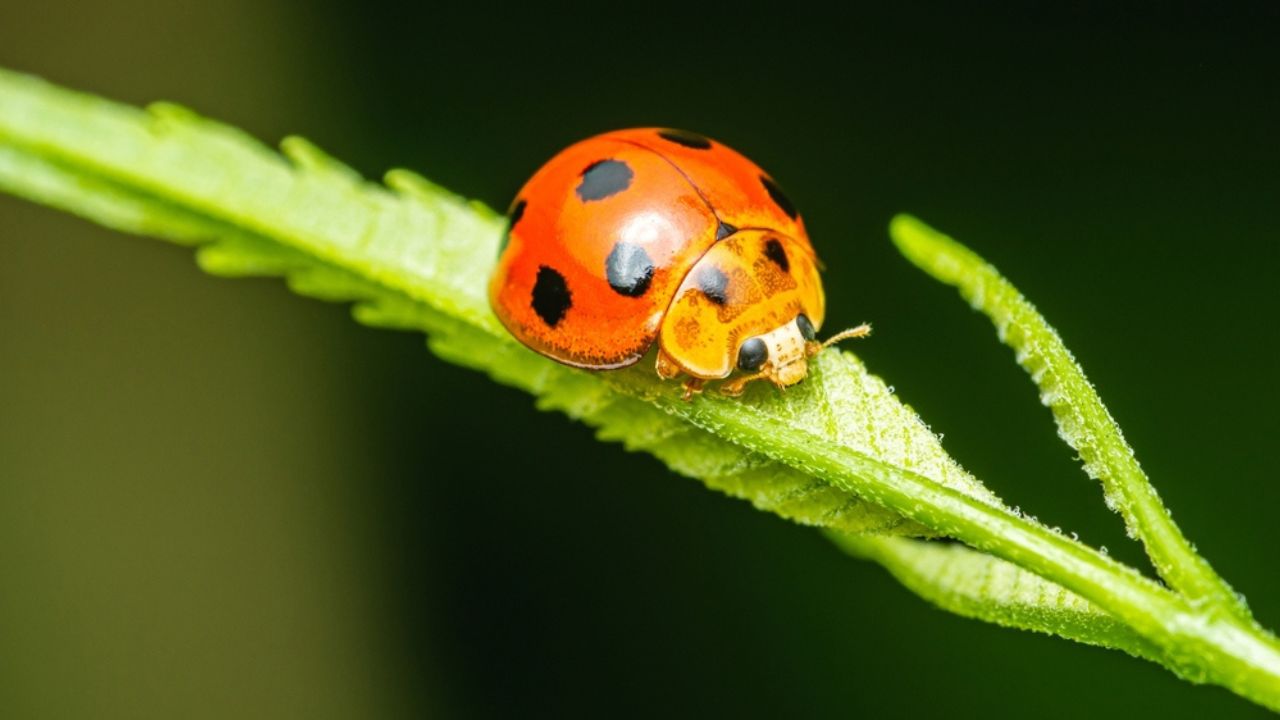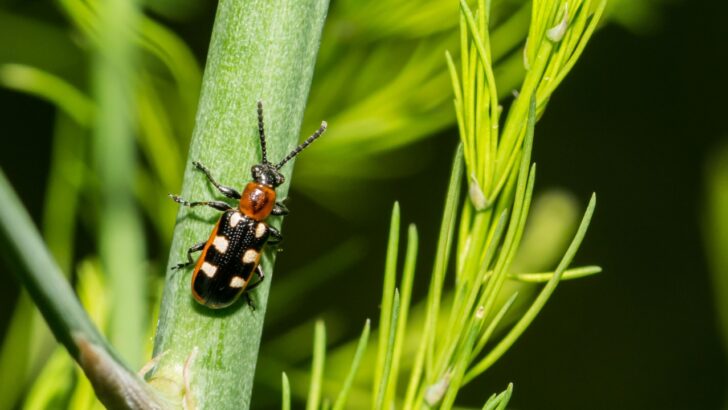Asparagus beetles are a pain in the … asparagus. There are the common asparagus beetle and the spotted asparagus beetle, and they both love eating asparagus. They hunker down anywhere they can to stay warm in the winter. When they awaken in the spring, they are hungry. If you grow asparagus, you are probably going to have to learn how to get rid of these beetles at some point.
There are a few proven asparagus beetle control methods. They work to prevent these and other insects from attacking your plants. Other methods help you properly deal with asparagus beetles after they show up. Here are 5 simple, safe, and effective ways to keep your garden asparagus beetle-free.
Asparagus Beetle Life Cycle – How To Recognize Asparagus Beetles

Image Credit: Shutterstock.
There are 2 different species of asparagus beetle:
- The common asparagus beetle (Crioceris asparagi) is 6 and 9 mm long and slightly elongated. It’s colored blue/black and has cream or yellow spots. Its larvae are fat gray grubs with black heads.
- The spotted asparagus beetle (Crioceris duodecimpunctata) is between 5 to 6.5 mm and is a red/orange color with 12 black spots.
They both are very damaging to the asparagus spears.
It’s important to recognize these parasites early in their life cycle, as it’s easier to remove eggs or even larvae than adult beetles. Adult beetles are really fast and not easy to catch.
Here’s how to recognize the asparagus beetles in their different life stages.
Asparagus Beetle Eggs

Image Credit: Shutterstock.
If you see these on your asparagus, it’s time to take action. The easiest way to get rid of asparagus beetle eggs is to brush them off with a small brush. They can’t survive on the ground at this stage, so it’s best to catch them at this stage.
Asparagus Beetle Larvae

Image Credit: Shutterstock.
If you missed the egg stage, you’ll see the larvae, usually at the top of the ferns. The larvae are harder to pick than eggs, but still easier than adult beetles.
I usually pick them by hand (you can do this if you don’t have a huge garden: we have about 50 asparagus plants). What I do at this stage is pick the larvae (they look like little slugs sticking to the top of the ferns) and drop them into a small plastic tub with water and a drop of dishwashing liquid.
Adult Asparagus Beetle

Image Credit: Shutterstock.
At this stage, the best and most natural method is to pick the beetles and drop them in a pail of soapy water. You can also spray your asparagus with neem oil.
Tips for Asparagus Beetle Control- 1. Invite Ladybugs and Lacewings into Your Garden

Image Credit: Shutterstock.
Lacewings and ladybugs find asparagus beetles delicious! They will also eat squash bugs and other garden predators. A recent Google search for “where to buy lacewings and ladybugs” produced 264,000 results. The listings included brick-and-mortar businesses and online destinations.
Your local gardening center or nursery may not sell lacewings and ladybugs. If this is the case, you can find what you need on Google or Amazon. Dragonflies, some birds, and farmyard fowl will also happily eat asparagus beetles.
2. Brush Away the Beetles

Image Credit: Shutterstock.
Some gardeners use a soft-bristled brush and simply brush off larvae and eggs. Eggs and larvae will die on the ground. Using a brush makes it possible even for anyone squeamish about touching bugs.
3. Use an OMRI-Certified Pesticide

Image Credit: Shutterstock.
I know what you are thinking. You want to keep man-made chemicals and toxic pesticides out of your garden. I feel the same way. An OMRI approval means acceptance by the Organic Materials Review Institute. This certification means that only ingredients approved by the USDA as organic are involved. “Safer Brand Tomato and Vegetable Insect Killer” is approved for use in organic gardens. Asparagus beetles hate it. You can probably find it at your local nursery. You can also pick it up online.
Neem oil is a safe, natural pesticide that comes from the Azadirachta indica tree. It is good for killing asparagus beetles and other pests. Neem oil helps prevent mildew buildup as well. It is safe for the soil and for use on edible plants. Neem oil is both EPA and OMRI approved as a safe, non-toxic gardening product.
4. Protect Your Plants with Row Covers

Image credit: Depositphotos.com.
Asparagus beetle control means protecting the entire plant. These bothersome garden gremlins don’t care what part of an asparagus plant is unprotected. They will eat it all. That’s why row covers are so important.
These lightweight fabrics or clothes protect an entire row of plants. They let mother nature in (water, air, sunlight) and keep asparagus beetles and other hungry insects and birds out.
5. Harvest Early

Image Credit: Yay Images.
This asparagus beetle control method shortens the life cycle of the pest. Fully grown beetles prefer plants with foliage. If you can harvest your crop when the asparagus is young, you automatically lower the odds of infestation.
FAQ

Image Credit: Shutterstock.
Do asparagus beetles bite?
While I’m not 100% sure (I tried to find an answer and couldn’t), I don’t think these tiny bugs bite humans. They fly away really fast as you approach them, so I doubt they’d intentionally try to land on a human body to bite.
Can I leave the asparagus ferns in the garden to overwinter?
You can, but if you do, you increase your chances of getting the beetles. It’s best to cut and remove the ferns as soon as they turn brown. And if you had beetles this summer, burn those ferns.
Are asparagus beetle eggs safe to eat?
They are easily brushed off the fresh spears, and rinsing them in lightly salted water will remove the rest, but if a few are left over, you’ll survive.



13 Best Companion Plants For Basil (And 5 To Avoid)
Tuesday 29th of March 2022
[…] repels asparagus beetles, among other pests. When grown together, basil and asparagus seem to attract ladybugs, which in […]
14 Best Companion Plants For Asparagus (And 3 To Avoid)
Tuesday 29th of March 2022
[…] plants repel the dreaded asparagus beetle by releasing solanine chemicals. In turn, asparagus deters nematodes that attack tomatoes. To avoid […]
Tips For Celebrating National Asparagus Month This May
Wednesday 28th of April 2021
[…] How to control asparagus beetles […]